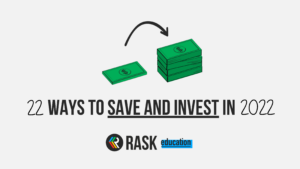The Dow Jones is a US sharemarket index which tracks 30 of the largest shares on the New York Stock Exchange (NYSE) and NASDAQ exchange.
Created by Charles Dow in 1896 with only 12 companies, ‘The Dow‘ is often quoted in financial newspapers and on television.
The 30 companies included in the index are chosen to reflect the US economy. As a result, the companies rarely change as often as they might in other market indices, like the S&P 500, which includes the 500 largest US companies.
The Dow index excludes companies in the utilities and transportation sectors.
Which companies make up the Dow Jones?
Fun fact: General Electric has been included in The Dow since it first launched in 1896!
As of January 2020, other companies that make up The Dow include American Express, Boeing, Johnson & Johnson, IBM and McDonald’s.
How is the Dow Jones calculated?
The Dow Jones is a price-weighted index.
What that means is the share with the highest price is given the most influence over the index’s day-to-day movements.
For example, if a $1,000 share and a $10 share were both included in the index, the higher priced share ($1,000) would have a much larger influence on the index — even if the company with a $10 share price had 200 times more shares on issue (making it a larger company).
Conversely, many of the most popular global market indices, such as Australia’s ASX 200, London’s FTSE 100, Hong Kong’s Hang Seng and the USA’s S&P 500 use market capitalisation to determine index inclusions.
To learn about the ASX 200 index and market capitalisation, check out our blog post: What is the ASX 200?
When The Dow first launched, the formula was simply the price of all companies divided by 12. But with companies splitting their shares and mergers and acquisitions taking place, a ‘divisor‘ had to be introduced. It adjusts by a small percentage every time one of these events happens, so The Dow’s overall number of points is not unreasonably affected.
This reason is why many stock market indices are expressed in points instead of dollars — to adjust for companies being included and removed from the index, and to adjust for changes in the corporate structure of companies in the index.
For more information on why stock market indices use points, visit our blog post: Why is the All Ordinaries and ASX 200 in points and not dollars?
The Dow Jones formula
Nowadays, The Dow’s formula is simply the price of all shares in the index divided by the ‘Dow divisor‘, which is a number less than one.
In April 2019, the Divisor was 0.14744568353097. Meaning, a $1 share price movement results in The Dow moving (1/0.14744568353097) = 6.782 points.
So, if a news headline were to read something like, “The Dow dropped 400 points yesterday”, this means that the share prices of the 30 companies that make up the Dow Jones would have, as a whole, fallen 400 x 0.14744568353097 = $59.
[ls_content_block id=”27643″]



